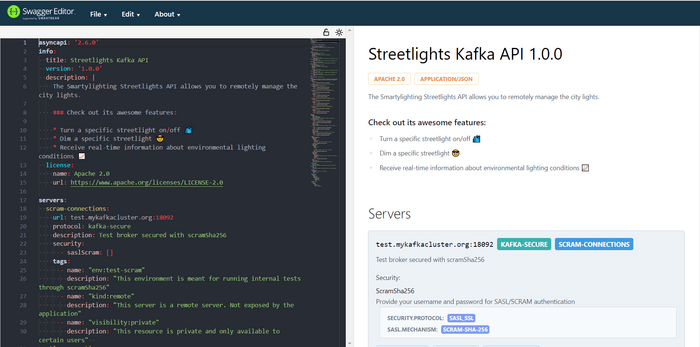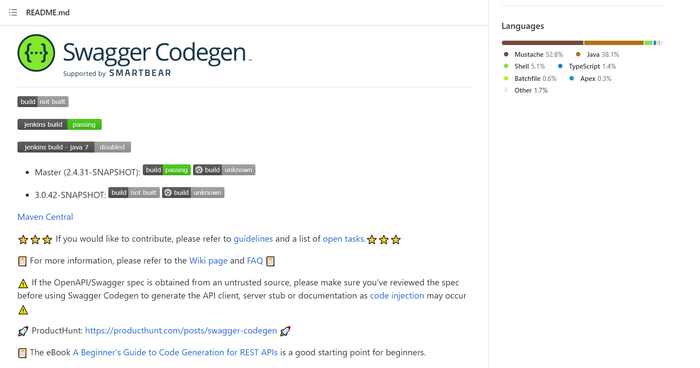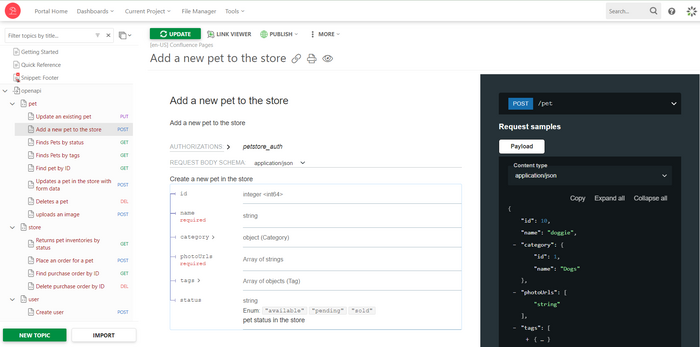Swagger for Technical Writers: Benefits and One Big Limitation
 ClickHelp Teamin ClickHelp Features on 3/9/2023 — 4 minute read
ClickHelp Teamin ClickHelp Features on 3/9/2023 — 4 minute read ClickHelp Teamin ClickHelp Features on 3/9/2023 — 4 minute read
ClickHelp Teamin ClickHelp Features on 3/9/2023 — 4 minute read

If you are an API technical writer, chances are you have heard of Swagger. In this blog, we will explain the main tools that Swagger offers, the advantages of this powerful platform, and ways to connect your API documentation created in Swagger with your user manuals.
Swagger is a set of open-source tools for building and documenting APIs. This toolset is built around the Swagger/OpenAPI specification that is based on JSON (JavaScript Object Notation) or YAML (YAML Ain’t Markup Language). The spec provides a standardized way of describing the various components of an API, such as its endpoints, parameters, responses, and security requirements.
The main tools of Swagger are Swagger Editor, Swagger UI, and Swagger Codegen. Swagger Editor enables users to write and edit API documentation and OpenAPI definitions. You can access this editor through a browser, download it for local use, or use it through a hosted version.

To share the documentation created using the editor with the target audience, you can use Swagger UI. This tool transforms an OpenAPI definition into interactive API documentation. Swagger UI converts the YAML or JSON file into a user-friendly format that presents API calls in an interactive manner.

Finally, to bring the API to life, you need to implement server logic. This is where Swagger Codegen comes in. This tool generates server stubs, client SDKs, and client libraries from an OpenAPI definition. With Swagger Codegen, the process of implementing server logic becomes much easier and more efficient.

So this powerful platform:
As you can see, Swagger has a lot of benefits regarding different use cases. However, technical writers create not only API documentation but also knowledge bases. It means that using Swagger is not enough for full-fledged technical writing, but we have something to offer.
ClickHelp is a help authoring tool — you can easily maintain technical documentation there. Although you can create API documentation in ClickHelp, some technical writers prefer using specialized tools (such as Swagger) for these purposes. The great decision is to connect two professional platforms, and we’ll explain why.
So the reasons to import Swagger/OpenAPI definitions to ClickHelp are as follows:
But if you import your Swagger/OpenAPI definition to ClickHelp, you will instantly improve your end users’ experience. Thanks to the full-text search features, your readers will find information about API methods and user manuals in one portal.
Importing your definitions solves the problem of branding differences. Your API documentation topics will be automatically published in accordance with ClickHelp portal branding.

Importing definitions to ClickHelp doesn’t mean that you don’t need Swagger anymore. The thing is, the imported API documentation will be just duplicated and divided into topics — you will proceed with managing API documentation in Swagger and then refresh corresponding topics in ClickHelp by clicking Update. The integration of two powerful tools will broaden your possibilities.
Swagger offers great tools for developing and documenting APIs. It has a neat UI, facilitates collaboration, and provides other overwhelming benefits. Nevertheless, you can maintain only API documentation there, so your user guides and other technical documentation will be hosted on another portal. To solve this problem, just import your Swagger/OpenAPI definition to ClickHelp and enjoy the powerful integration.
Good luck with your technical writing!
ClickHelp Team
Author, host and deliver documentation across platforms and devices
Get monthly digest on technical writing, UX and web design, overviews of useful free resources and much more.
"*" indicates required fields